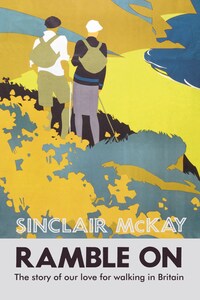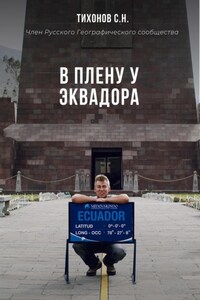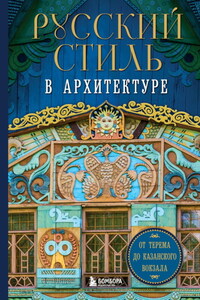Title Page
Dedication
Introduction
Chapter 1
Edale to Kinder Scout: The Peak District and the First Modern Rambling Battle
Chapter 2
Rannoch to Corrour Shooting Lodge in a Howling storm: An investigation of the Lure of Wilderness, and the Earliest Days of Organised Rambling
Chapter 3
Dorking to Box Hill: Introducing Jane Austen, and the Subsequent Rise of the Victorian Walking Club
Chapter 4
A Swift Detour: To Briefly Examine Walkers as Deviants, Outcasts and Fugitives – and as Doomed, Wandering Souls
Chapter 5
A Day Out Among The Tors and Mires of Dartmoor: The Prototype National Park
Chapter 6
Seatoller to Haystacks, Underskiddaw to Dodd Point: The Lake District and the Cults of Wordsworth, Wainwright and Withnail
Chapter 7
Rhossili to Llanrhidian: In the Gower Peninsula to Consider the Surprisingly Long History of Walking Gear – While Wearing Quite Unsuitable Clothes
Chapter 8
Higham to Cooling: The Hoo Peninsula, North Kent, in Search of Beauty in Ugliness
Chapter 9
A Brief Detour into the Lures and Attractions of Walking at Night
Chapter 10
Exploring the Preternatural Forest of Dean and Woodland Legends – While Examining the Beguiling History of Youth Hostels and B & Bs
Chapter 11
A Quick Detour Through Regenerated Cities and the Art of Urban Rambling
Chapter 12
In the Steps of Tom Stephenson Along Britain’s Many Ways – and Paying Tribute to Generations of Self-Taught Botanists
Chapter 13
Wendover to Princes Risborough: Chilterns and the History of Trespass, Via Some Very Private Property
Chapter 14
Warminster to Battlebury Fort, Salisbury Plain – an Effort to Reach England’s Inland Atlantis
Chapter 15
A Diversionary Walk on the Weird Side: A Brief Flit from Ley Lines to Stone Circles to Pan
Chapter 16
Exploring the Lures of Solitude and Dodging The Grey Man of Ben Macdhui
Chapter 17
A Day Out in Brontë Country – What Happens When Much-Treasured Walking Landscapes Become Theme Parks
Chapter 18
Recent Furious Countryside Battles: The Patches of Forbidden Land that Remain and an Unsuccessful Attempt on the River Path at Windsor
Chapter 19
From Chilham to Canterbury along the North Downs Way: The Future of Walking and of the Countryside Rolled into one Ancient Pilgrimage
Endnotes
Further Reading
Acknowledgements
Other Books by Sinclair McKay
Copyright
About the Publisher
You are not long out of the railway station before you catch the desired view: the enchanting old windmills – one white, one black – on the crest of the hill, like odd little boats with bright wooden sails riding a giant green wave. A map is scarcely necessary, your destination can be in no doubt. The authorities have fallen over themselves to pepper the road with brown signs that point insistently. They gesture to the ‘South Downs’, as if to say: ‘Well – why else would you be here?’
The initial stretch of railway-hugging concrete pathway is slightly urinous in smell, but bordered on the other side by delicate woodlands, throbbing with bluebells on this sunny spring day. It is a trifling nuisance, this blistered tarmac cut-through that discreetly ushers you out of the Sussex town of Hassocks; a tiny price to pay for the goal that lies ahead. A mile later, you look right up again, at the green hill with its white skeleton of chalk beneath. You rejoin the ‘South Downs’ path, with more of those signs urging you on; you gaze up at that distant ridge, and the sky above that with all its pale blue promise. No one who considers themselves to be any kind of a walker could conceivably hold back.
The old children’s story formulation ‘over the hills and far away’ is one of the most evocative phrases in the English language. It expresses that impossibly ancient curiosity and yearning for adventure; there is also, somehow, the possibility of transformation. Any rambler will also know that the phrase has a physical truth; that when one is walking across a great plain towards hills, the urge to see beyond them becomes magnetic, instinctive. To stop, to turn, to go back requires a powerful exertion of will. So here I am, after a short, rigorous climb, by those old windmills called Jack and Jill, but gazing at yet more green ridges above. This is the South Downs Way, in the South Downs National Park. It is the most recent of such Parks, having attained this special status in 2009. This path is a superb and beautiful tribute to a movement that has been campaigning not merely for decades – but centuries.
On a day such as this, with a refreshing but subtle breeze, and the sun dazzling down, the obvious weekend destination for urban fugitives is not here. It is about five miles to the south: the huge majority of the people crammed – standing room only – on to the train out of London were heading for the beach at Brighton. But we who are up on this ridge – and there are a good many of us – have a purer purpose in mind. And as we pass one another, on that path that is now snaking around towards Ditchling Beacon, we recognise each other through clothing conventions.








